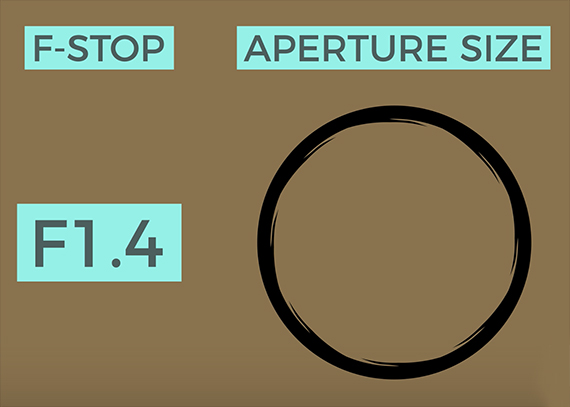Aperture—the hole within a lens that allows light to travel through to the camera body’s internal sensor—is one of the most influential factors in determining the look of a photograph. It’s crucial for photographers to understand the ins and outs of aperture as it heavily impacts both depth of field as well as exposure. This animation from Apalapse is a great start:
One of the easiest ways to understand just how aperture works is to take a close look at the human eye. Using this analogy, the glass element of a lens is to the camera what the cornea is to the eye. That is, the surface gathers light and bends it inwards. From there, the irises expand and contract to control just how much of that light travels through the pupil to reach the retina (and subsequently, the brain). A camera’s aperture works exactly the same way. Photographers have the ability to open or close up a camera’s diaphragm, which controls how large or small an aperture will be. The amount of light then travels through the aperture and hits the light sensitive film or sensor housed inside of the camera, which creates an image.
F-stops are the units used to express a camera’s aperture. It describes just how open or closed the aperture itself is. The smaller an f-stop, the wider its corresponding aperture will be.
As was mentioned earlier, aperture plays a significant role in the exposure of an image. This makes sense, as larger apertures let more light into the camera (and vice versa). It’s important to keep your ISO and shutter speed balanced with your aperture to avoid over exposing or under exposing photographs.
Aperture also directly impacts an image’s depth of field. Smaller apertures such as f/16 will keep objects near and far perfectly in focus. However, bringing the aperture down to something like f/2 will create a very specific line of focus, throwing everything that falls outside of it into an indistinguishable blur.
Every lens has a limit on how large or small the f-stops can be. It’s almost always indicated on the lens itself. Prime lenses with fixed focal lengths maintain the same aperture range at all times. However, the available aperture of a zoom lens changes depending on the focal length in use. Often times, the higher a lens’s focal length, the less versatility it will have in its aperture range.
Lastly, there are two camera shooting modes that provide constant control of aperture at all times. The first is Manual mode, which allows the photographer complete control over every individual setting. The second is called Aperture Priority mode. In this setting, the photographer chooses a desired aperture and camera then automatically adjusts shutter speed and ISO for perfect exposure.
There is no perfect combination of camera settings out there, as photography is subjective and scenes are in a constant state of flux. However, with an understanding of the functions and qualities of aperture, it becomes infinitely easier to craft photographs and capture the world exactly as you perceive it.
Like This Article?
Don't Miss The Next One!
Join over 100,000 photographers of all experience levels who receive our free photography tips and articles to stay current:









Leave a Reply